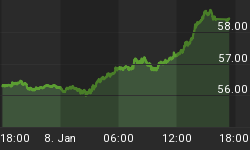I usually don't care about such things as there is so much bad market analysis out there, but when the "insight" is so egregious, I feel compelled to stand up and say something.
I read an article this morning at MarketWatch entitled: "The Intermediate Term is Trending Higher". It was written by Kevin Marder. Marder has some pretty hefty credentials as the co-founder of MarketWatch and as a principal in Marder Investment Advisors Corporation. In his analysis of the intermediate term trend, Marder points to the what a "normal" pullback should be within an intermediate trend, and he also cites accumulation days. He defines a major accumulation day as a "price rise at least 0.3% on volume that is both above average and at least 3% more than that of the prior day. This is an objective measure of institutional demand for stock." Simple enough, I guess. It makes sense like so much dogma on Wall Street. So I got to thinking what do such major accumulation days really look like? Can I use this in my own market analysis?
So that is what I did. I defined a major accumulation day using Marder's definition, and I pulled up a daily chart of the NASDAQ in the old TradeStation (see figure 1). The black dots over the price bars are major accumulation days according to Marder's criteria.
Figure 1. NASDAQ Composite/ daily
Just looking at the graph, I have to ask: so how does this help me navigate the market? It looks like major accumulation days are found at market tops (points #1 and #2 on chart) and market bottoms (point #3) some of the time and during intermediate trends (point #4) and not during intermediate trends (point #5). While the lack of accumulation days has Mr. Marder concerned for the intermediate trend, I cannot see how there is any evidence to suggest that their presence is even positive for the continuation of the trend. Nothing. Zip!
What is even more surprising is that he gets paid to write about this stuff as though it is gospel, and he gets paid by his clients to use this kind analysis when he invests their money. Please, I wish it was so easy. As far as I can tell, there is very little merit to monitoring major accumulation days. Mr. Marder needs to expound on this concept further or relegate it to the trash bin of technical analysis indicators. Or at the very least, he should explain to his readers that he is analyzing price trends with tools that may or may not work and that have little bearing to the actual price action. From my way of thinking, why use something if it doesn't work?
In the final analysis, the market may go up and it may go down, and the presence or absence of accumulation days will have nothing to do with it.
















